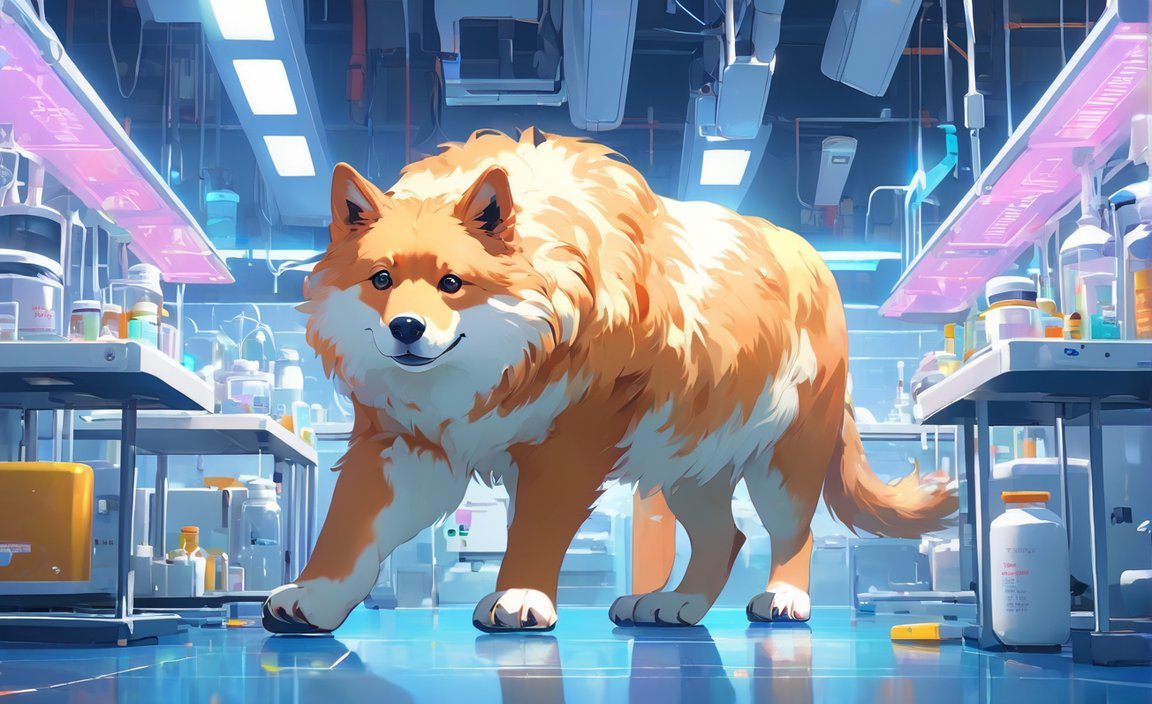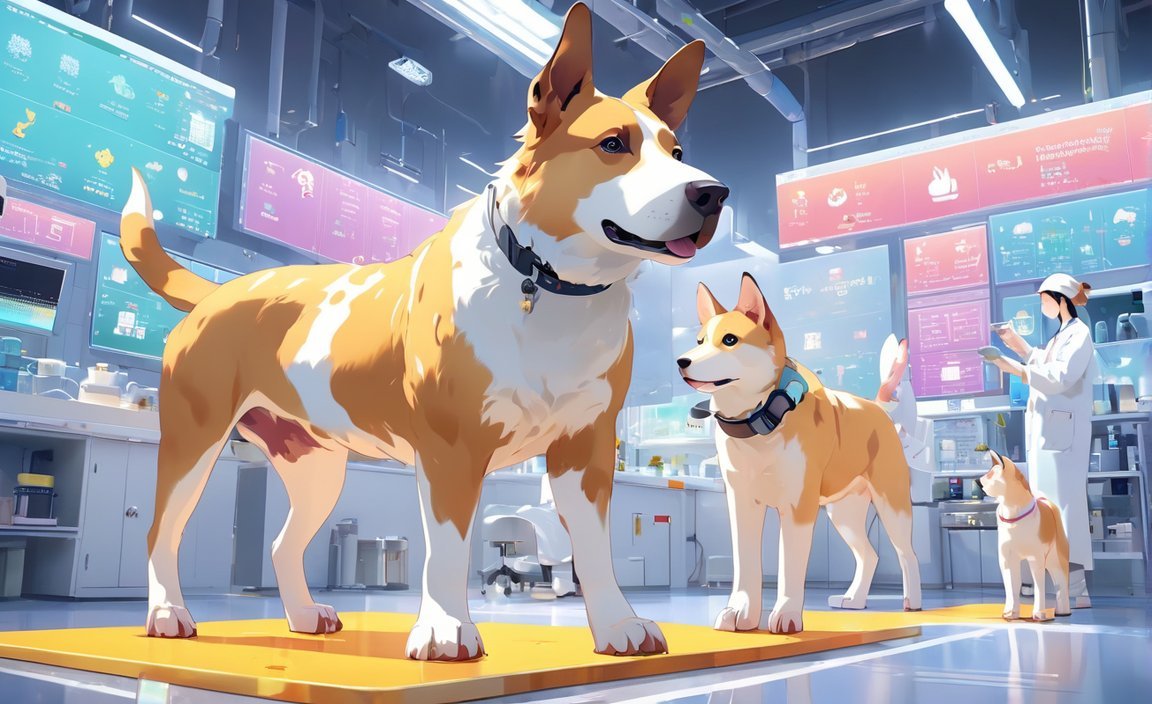Unveiling 5 Fascinating Veterinary Science Facts: A Glimpse into Animal Care

As a seasoned veterinary professional, I have dedicated my career to unraveling the intricacies of veterinary science. In this article, I will shed light on five captivating facts about this field, exploring the vital role veterinary professionals play in ensuring the health and well-being of our beloved pets. With hands-on experience in animal care, medicine, and surgical procedures, I am excited to share my extensive knowledge of pharmacology, pathology, and anatomy. Join me on this enlightening journey as we delve into the fascinating world of veterinary science.
Key Takeaways:
- The United States has over 32 veterinary medicine schools offering different study areas of animal science.
- Veterinarians can choose from 46 different specialties when attending veterinary medical colleges.
- Private clinics employ 77% of vets who care for domestic cats, dogs, and other household pets.
- The average annual salary for a veterinarian in the US is $96,624.
- Veterinary professionals have diverse career paths available, such as general practice or specialized practice in fields like internal medicine, surgery, dermatology, and oncology.
5 Facts About Veterinary Science
As a seasoned veterinary professional, I am excited to share with you five fascinating facts about veterinary science. These facts shed light on the important role that veterinary professionals play in ensuring the health and well-being of our beloved pets. So, let’s delve into the world of veterinary science and discover these intriguing facts.
Fact 1: Over 32 Veterinary Medicine Schools in the United States
Did you know that the United States has over 32 veterinary medicine schools? These institutions offer a diverse range of study areas within the field of animal science. From small animal care to wildlife medicine, students have the opportunity to specialize in various aspects of veterinary science. The presence of these schools highlights the significance of veterinary education in our society.
Fact 2: 46 Specialties for Veterinary Medical Professionals
Veterinarians have a multitude of career pathways to explore. In fact, they can choose between 46 different specialties when attending veterinary medical colleges. Whether they wish to specialize in internal medicine, surgery, dermatology, oncology, or any other area, veterinary professionals have the opportunity to delve deeper into their areas of interest. This specialization allows them to provide specialized care and expertise to animals in need.
Fact 3: Majority of Vets Work in Private Clinics
When it comes to caring for domestic cats, dogs, and other household pets, private clinics play a crucial role. In fact, 77% of veterinarians who care for these beloved pets are employed in private clinics. These clinics serve as a primary source of healthcare for our furry companions and offer a wide range of services, including vaccinations, routine check-ups, and surgical procedures. The availability of private clinics ensures that pet owners have access to quality veterinary care for their beloved animals.
Fact 4: Average Annual Salary for Veterinarians in the US
Have you ever wondered what the average annual salary for a veterinarian in the US is? Well, it’s $96,624. This figure highlights the dedication and commitment that veterinary professionals invest in their careers. Their years of education, training, and experience are rewarded with a salary that reflects the importance of their role in animal care and welfare. It is a testament to the value society places on the health and well-being of our four-legged friends.
Exploring Career Paths in Veterinary Science
The field of veterinary science offers a multitude of career paths for aspiring professionals. Let’s take a glimpse into some of the typical routes you can follow.
1. General Practice: Caring for Domestic Animals
Many veterinarians choose to work in general practice, providing healthcare services to domestic animals such as cats, dogs, and other household pets. These professionals work in private clinics and offer a wide range of services, including preventive care, diagnosing and treating ailments, and performing surgeries. General practitioners are the frontline caretakers for our pets, ensuring their overall health and well-being.
2. Specialized Practice: Delving Deeper into Expertise
For those with a passion for a particular area of veterinary science, specialized practice offers the opportunity to delve deeper into their chosen field. Veterinarians can specialize in various areas, such as internal medicine, surgery, dermatology, oncology, and more. Specialized practitioners possess advanced knowledge and expertise, allowing them to provide specialized care for animals with specific health conditions or needs.
These quick facts give us a glimpse into the diverse opportunities and areas of specialization available within the field of veterinary science. Whether you choose to pursue a career in general practice or follow a specialized path, veterinary professionals play a vital role in the well-being of animals and continue to advance the field through their expertise and dedication.
Remember, veterinary science is an ever-evolving field where knowledge and skills continually expand. By staying up-to-date with the latest advancements and continuously learning, veterinary professionals ensure that our beloved pets receive the best possible care.
So next time you visit your local veterinary clinic, take a moment to appreciate the incredible work and dedication that goes into the field of veterinary science.
If you’re curious about what it takes to become a veterinarian, check out these 5 facts about being a veterinarian. You’ll learn about their crucial role in animal healthcare and the dedicated efforts they put into saving the lives of our furry friends. Explore more here.
If you’ve ever wondered about the incredible work therapy dogs do, you won’t want to miss these 5 facts about therapy dogs. Discover how these furry companions provide support, comfort, and joy to people of all ages. Find out more here.
Interested in the world of veterinary medicine? Uncover 5 facts about veterinarians that will amaze you. From the diverse range of animals they care for to the years of intense education and training, this behind-the-scenes look will leave you in awe. Dive in here.
Have you ever wondered what makes a veterinarian’s job so fascinating? Uncover 5 interesting facts about a veterinarian to gain insight into their daily life. From interacting with different species to performing life-saving surgeries, their experiences are nothing short of extraordinary. Discover more here.
Advancements in Technology: A Game-Changer for Veterinary Medicine
Technological advancements have revolutionized the field of veterinary medicine, bringing about remarkable changes in the way animals are diagnosed and treated. The impact of these advancements cannot be overstated, as they have significantly improved the quality of care for our beloved pets. In this article, we will delve into five fascinating facts about veterinary science that highlight the profound influence of advancements in technology.
Fact 1: Precision Imaging Reveals the Unseen
One of the groundbreaking advancements in veterinary medicine is Precision Imaging technology. Through this innovative approach, veterinarians can now peer inside an animal’s body and uncover hidden ailments with unprecedented clarity. Precision Imaging encompasses advanced techniques like MRI, CT scans, and ultrasound, which provide detailed and accurate images of an animal’s internal organs and tissues.
With the help of such precise imaging, veterinarians can detect and diagnose conditions like tumors, fractures, and internal injuries with remarkable precision. This technology has transformed the way veterinarians approach diagnostic procedures, making it easier to identify and address potential health issues before they become critical.
Fact 2: Molecular Diagnostics: Unlocking the Secrets of Health
The advent of Molecular Diagnostics has undoubtedly been a game-changer in veterinary medicine. This technology involves analyzing an animal’s DNA, RNA, and proteins to identify genetic disorders, infectious diseases, and other health conditions. By understanding the molecular composition of an animal’s cells, veterinary professionals can now provide personalized treatment plans and preventive measures to enhance the animal’s overall well-being.
Through Molecular Diagnostics, veterinarians gain deeper insights into an animal’s health, enabling them to devise tailored treatment strategies. This technology has opened doors to advanced therapeutics and preventive care, greatly improving the prognosis for animals.
Fact 3: Telemedicine: Connecting Veterinarians and Pet Owners
Advancements in technology have given rise to a remarkable development in veterinary care: Telemedicine. This innovative approach allows pet owners to consult with veterinarians remotely, eliminating the barriers presented by geographical distance and travel constraints. Particularly beneficial for those residing in remote areas or facing transportation challenges, telemedicine provides the opportunity for timely consultations and reduces the need for unnecessary travel and waiting times.
Through telemedicine, veterinarians can offer guidance, prescribe medications, and monitor the progress of their animal patients from a distance. This technology has proven instrumental in providing timely care, thus reducing the burden on both pets and owners.
Fact 4: Robotics and Automation: Pioneering Surgical Precision
The use of robots and automation in veterinary medicine has unlocked new possibilities for surgical precision. With the assistance of surgical robots, veterinarians can perform intricate procedures with minimal invasiveness, ensuring faster recovery times and improved outcomes for animals. Additionally, automation has streamlined administrative tasks and medical record management in veterinary clinics, leading to increased efficiency in the overall healthcare process.
By embracing robotics and automation, veterinary professionals can focus more on providing specialized care to their furry patients, reducing the administrative burden, and optimizing their expertise.
Fact 5: 3D Printing: Revolutionizing Veterinary Rehabilitation
Another remarkable advancement in veterinary science is 3D printing. This technology has transformed the production of personalized prostheses and orthopedics for animals, improving their mobility and quality of life. Veterinarians can now create customized implants that perfectly fit an animal’s anatomy, ensuring optimal functionality and comfort. Furthermore, 3D printing aids in creating surgical models, enhancing preoperative planning and training for veterinarians.
Thanks to 3D printing, veterinary rehabilitation has reached new heights, offering innovative solutions for various conditions and injuries that were previously challenging to treat effectively.
Key Takeaways:
- Precision Imaging technology, including MRI, CT scans, and ultrasound, allows veterinarians to detect and diagnose hidden ailments with remarkable accuracy.
- Molecular Diagnostics offers personalized treatment plans by analyzing an animal’s DNA, RNA, and proteins, leading to more targeted care.
- Telemedicine facilitates remote consultations, reducing travel barriers and ensuring timely care for pets in remote areas.
- Robotics and automation enable veterinarians to perform precise surgeries with minimal invasiveness, while also streamlining administrative tasks.
- 3D printing transforms veterinary rehabilitation by producing personalized prostheses and surgical models for improved outcomes.
Sources:
- Vetport.com: Technology Helping Veterinary Medicine
- ResearchGate: The Future of Technology and Computers in Veterinary Medicine
Specialized Areas within Veterinary Science: Focused Care and Treatment for Different Animal Species
When it comes to providing top-notch veterinary care, it’s important to recognize that not all animals are the same. Different species have unique biology, health needs, and medical conditions that require specialized knowledge and expertise. Thankfully, veterinary science offers a wide range of specialized areas that allow for focused care and treatment for different animal species. Let’s explore five fascinating facts about these specialized areas within veterinary science and their vital role in ensuring the health and well-being of our beloved pets.
1. Specialized Areas: A Diverse Veterinary Landscape
In the world of veterinary science, there are numerous specialized areas that veterinarians can choose to focus on. From dermatology to oncology, internal medicine to surgery, and even behavioral medicine to radiology, these specialties cater to the diverse needs of animals. By honing their skills and expertise in a specific area, veterinary specialists are able to provide highly targeted care and treatment to different animal species, ensuring optimal health outcomes.
2. The Impact of Veterinary Specialization
The expertise and knowledge of veterinary specialists can make a world of difference when it comes to diagnosing and treating complex medical conditions in animals. For instance, an exotic animal specialist may possess the specialized knowledge needed to care for unique species like reptiles or birds. Similarly, an equine specialist can provide tailored care for horses, while a feline specialist can address the specific health needs of cats. By collaborating with general practice veterinarians, these specialists enhance the quality of care and improve outcomes for animals with specialized medical requirements.
3. Referrals: Seamless Collaboration for Enhanced Care
Specialized veterinary care often requires collaboration between general veterinarians and specialists. When a regular veterinarian encounters a case that goes beyond their expertise, they can refer the animal to a specialist who can provide the necessary specialized care. Referrals ensure that animals receive the most appropriate and effective treatment from professionals with extensive knowledge in that specific area. This collaborative approach allows for comprehensive and focused care, ensuring the best possible health outcomes for our furry friends.
4. Nurturing Preventive Medicine and Treatment
Veterinary science is not just about treating diseases; it also focuses on the prevention of illnesses and the promotion of overall well-being. Comparative medicine, a field within veterinary research, plays a vital role in this regard. By studying how diseases affect different animal species, researchers can develop preventive medicine and innovative treatment options that benefit both animals and humans. This interconnection between veterinary science and public health highlights the extensive impact of specialized areas in ensuring the health and welfare of animals.
5. Expanding Access for Comprehensive Care
Access to veterinary care is a critical factor in ensuring the health of pets, as well as animals involved in research, testing, and teaching. Unfortunately, some pet owners face barriers that prevent them from accessing proper veterinary care. This reinforces the need for solutions that improve access, such as telemedicine, which enables remote consultations and reduces travel barriers. By leveraging technological advancements and innovative approaches, veterinary professionals can reach more animals in need, providing comprehensive care regardless of geographical location.
Key Takeaways:
- Specialized areas in veterinary science cater to the diverse needs of different animal species, ensuring tailored care and treatment.
- Veterinary specialists possess expertise in specific areas, enhancing the diagnosis and treatment of complex medical conditions.
- Collaborative efforts between general veterinarians and specialists through referrals result in comprehensive and focused care for animals.
- Comparative medicine contributes to preventive medicine and innovative treatments, benefiting animals and humans alike.
- Expanding access to veterinary care through telemedicine and other solutions is crucial in ensuring comprehensive care for all animals.
Citation:
1. National Center for Biotechnology Information. “Veterinary Care and Use Programs.”
2. National Center for Biotechnology Information. “Attending Veterinarian and Veterinary Care.”
Now you have a glimpse into the world of specialized veterinary care. From dermatology to oncology, these specialized areas within veterinary science ensure that our furry, feathered, and scaly friends receive the focused care they need. So the next time you visit the veterinarian, remember the dedicated professionals who work tirelessly to keep our beloved animals happy and healthy.
Collaboration between Veterinary Professionals and Other Fields: Advancing Animal Healthcare
The field of veterinary science encompasses much more than just caring for animals. It is a multidisciplinary field that involves collaboration between veterinary professionals and other fields to drive advancements in animal healthcare. This collaboration is crucial for addressing emerging infectious diseases, improving public health outcomes, and ensuring the health and well-being of both animals and humans. In this article, we will delve into five fascinating facts about veterinary science that highlight the importance of collaboration in pushing the boundaries of animal healthcare.
Fact 1: Collaboration bridges the gap between human and veterinary medicine to tackle infectious diseases
One of the key areas where collaboration between human and veterinary medicine is vital is in addressing emerging infectious diseases. Many diseases can cross the barriers between humans and animals, posing significant public health risks. By working together, professionals from both fields can combine their expertise to develop effective preventive measures, diagnostic tools, and treatments that protect both animal and human populations. However, despite the growing recognition of the need for collaboration, it is still not fully achieved.
Fact 2: The need for collaboration arises from the rise of infectious diseases and antimicrobial resistance
The world has witnessed a rise in infectious diseases that can directly or indirectly affect both humans and animals. This, coupled with the increasing resistance of microorganisms to antimicrobial drugs, calls for collaborative efforts between veterinary professionals and other healthcare sectors. By pooling their knowledge and resources, these professionals can devise strategies to prevent, detect, and treat these diseases more effectively.
Fact 3: Collaboration holds promises for the future but has yet to be fully realized
While collaborations between human and veterinary medicine have been proposed for the future, their full implementation is still a work in progress. The potential benefits of such collaborations are substantial, ranging from improving overall public health to enhancing biomedical research and addressing zoonotic diseases. As these collaborations become more established, we can expect to see even more significant advancements in animal healthcare.
Fact 4: Veterinary professionals contribute to improving human and public health in diverse ways
The veterinary profession plays a crucial role in improving human and public health through various means. This includes enhancing agricultural and food systems, advancing biomedical research, preventing and addressing zoonotic diseases, and promoting environmental and ecosystem health. Collaboration between veterinary professionals and other fields amplifies the impact of these contributions, leading to improved health outcomes for both animals and humans.
Fact 5: Effective collaboration is essential for controlling disease outbreaks
Collaboration between human and veterinary healthcare professionals is essential, especially when it comes to controlling outbreaks of diseases. By working together, professionals can quickly identify and respond to potential outbreaks at an early stage, implementing preventive measures and initiating timely treatments. This collaboration not only curbs the spread of diseases but also saves lives and minimizes the impact on both animals and humans.
Key Takeaways:
- Collaboration between veterinary professionals and other fields is crucial for addressing emerging infectious diseases and improving public health outcomes.
- The rise in infectious diseases and antimicrobial resistance emphasizes the need for effective collaboration in animal healthcare.
- Despite promising proposals, collaboration between human and veterinary medicine is still a work in progress.
- Veterinary professionals contribute to improving human and public health through various means, including agriculture, biomedical research, zoonotic disease prevention, and environmental health.
- Effective collaboration is essential for controlling disease outbreaks, enabling early intervention and minimizing the impact on animals and humans.
Sources:
1. De Giusti, M., Barbato, D., Lia, L., Colamesta, V., Lombardi, A. M., & Ca. D. (2019). Collaboration between human and veterinary medicine as a tool to solve. The Lancet, 3(1), e11-e12.
2. Eussen, B. G. M., Schaveling, J., Dragt, M. J., & Blomme, R. J. (2017). Stimulating collaboration between human and veterinary health: a social dilemma. BMC veterinary research, 13(1), 1-12. ]

FAQ
Q1: How many veterinary medicine schools are there in the United States?
A1: There are over 32 veterinary medicine schools in the United States that offer different study areas of animal science.
Q2: How many veterinary medicine specialties can veterinarians choose from?
A2: Veterinarians attending veterinary medical colleges have a choice of 46 different veterinary medicine specialties to specialize in.
Q3: What is the average annual salary for a veterinarian in the US?
A3: The average annual salary for a veterinarian in the US is $96,624.
Q4: What types of animals do private clinics usually care for?
A4: Private clinics typically employ 77% of veterinarians who care for domestic cats, dogs, and other household pets.
Q5: What are some typical career paths in veterinary science?
A5: In veterinary science, some typical career paths include general practice, where veterinarians work in private clinics providing healthcare services to domestic animals, and specialized practice, where veterinarians specialize in areas such as internal medicine, surgery, dermatology, oncology, and more.
















